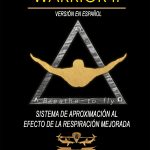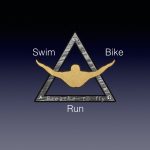Wolfpack Yoga Philosophy

The SOF training approach to yoga
« For the Strength of the Pack is the Wolf, the Strength of the Wolf is the Pack. »
-RUDYARD KIPLING-
WY training philosophy
The meaning of the phrase in Rudyard Kipling’s jungle book inspires us to stay strong individually to contribute to the strength of our herd, whether it be work, family, or some sport or hobby we practice. This is the idea that gave Wolfpack yoga its name.
Many variables in life are not under our control and we can do nothing about it. What is possible is to focus on improving what is within our reach. Within the WY spectrum, a major effort is concentrated on mastering the aspects we can positively influence.
Based on the methodology of the military training approach system (mission analysis, the definition of essential tasks for the fulfillment of the proposed objectives, design, preparation and implementation of the training plan) used by the special operations forces (SOF) in the elaboration of its plans, Wolfpack yoga (WY) was launched.
The purpose of WY training is to prepare the average individual to assume superior control of the mind and body in a systematic, gradual, and progressive way; and maintain this control until the last breath of his life. The priority is to breathe and enjoy. Everything else is secondary, the depth in the postures will improve with practice.
The WY is a personal physical training program, whose distinctive feature is the integration of 17 individual events. The exercises have been arranged in a sequential and logical routine to optimize compliance with the proposed learning objectives according to the desired standard, as we will see below. In this order of ideas, the union of two improved breathing workouts and fifteen asanas or Hatha yoga poses result in a powerful synergy.
Delta-W breathing and A-Box breathing are two techniques specially adapted to achieve improved breathing with its continuous practice. Delta-W and A-Box impact the following 5 specific objectives of the Warrior Breathing Training Program (WBTP ):
The 5 specific objectives of WBTP:
- Accustom the respiratory system to consciously use only the nose to inhale and breathe. (This concept seems very basic, but poor breathing habits and weak diaphragm make many people breathe through the mouth).
- Strengthening of the diaphragm.
- Increase CO2 tolerance capacity.
- Boost the natural production of NO (nitric oxide).
- Induce the relaxation of the organism through specific breathing techniques.
On the other hand, fifteen poses have been judiciously chosen to fulfill three vital objectives to achieve superior control of the body:
- Control of the mind through improved breathing.
- Increase mobility, working flexibility, and elasticity of muscles and joints from stretching asanas.
- Strengthen the body structure, mainly the vertebral column as the axis of the body, with asanas focused on the physical demands of the back.
Each well-executed workout positively impacts the body, mind, and spirit. Even though the main focus is physical, we do what might be called a moving meditation; because we are also thinking, breathing, and feeling. One of the main aspects of WY is that the evaluation of results plays a secondary role in the practice. The fundamental objective is to feel and listen to the body, trying to gradually bring it to its limits.
A standard is a statement that establishes the criteria under which the level of achievement of a learning objective is measured. This is how we define the standard of individual training events. All exercises have a level of compliance between zero and one hundred percent.
To explain the above, we will take as an example the Dandayamana Janushirasana pose, deep knee bend. Achieving a level of compliance of one hundred percent in this pose requires years of practice and probably only yoga masters will achieve one hundred percent. These high levels of compliance in the execution of the poses are not the expected standard of the WY, this does not mean that it does not aim to achieve one hundred percent.
Given the above, the WY’s standard for each exercise is to win the decisive battle of defeating yourself every day. In other words, increase that percentage of compliance level of each exercise by one point with respect to the previous practice, increase the depth of each asana by one millimeter and progress gradually to advance in the posture depth inch by inch. These small victories are those that generate positive feelings in the mind, and adding them all up in the end, will produce the expected consequences.
The main purpose is to focus all the attention of the present moment on the execution of each pose. This is the search for the ideal individual balance of the body and the mind, through improved breathing while always maintaining positive feelings.
The five principles of WY
- Controlled breathing
- Sustained relaxation
- Perspicacity in the attempt
- Maximum effort on the basics
- Maintain positive sensations
WY emblem (logo)
Considering that the design of the WY training program is influenced by the methodology of military training, an emblem is assigned to the program, which generates a special identity. It is worth explaining that in the military training programs a badge is awarded to those who successfully complete a specific course, which they can wear in their uniform, at chest height, displaying the pride that the accomplished mission brings.
WY emblem elements
- Figure of the Warrior: Virabhadrasan II or Warrior II, is position No. 3 of the WY. This pose has a profound history behind it. It’s named after the Hindu mythological warrior, Virabhadra, an incarnation of the god Shiva. Virabhadra was a tall, dark, and fierce deity, depicted with a thousand arms, flaming hair and eyes, and wearing a garland of skulls.
- Equilateral Triangle: Represents the ideal balance of mind and body connected with breathing.
- Alpha: It is the first letter of the Greek alphabet. It means the beginning of all things.
- Omega: It is the last letter of the Greek alphabet and the end of everything.
- Legend Hold the breath… have fun: This inscription begins with the Alpha and ends with the Omega, it represents faith in God, «I am the Alpha and the Omega», «Creator of all things visible and invisible», » the beginning and the end». Life begins with one breath and ends with another breath. The phrase «breathe have fun» is an invitation to make the most of every opportunity we have to be alive and breathe in the best possible way.
WY daily practice
The duration of the entire WY sequence is forty-five minutes. The training routine occurs in three moments. A first moment of breathing focused on preparing you for the rest of the training, a second moment in which 15 asanas focused on strength, balance, and stretching are performed, and the third moment is a breathing exercise which objective is to recover the ideal respiratory rhythm, lower heart rate, lower blood pressure, increase muscle relaxation and stimulate the vagus nerve.
All it takes is preparation. Forty-five minutes a day of WY conducted properly, make a difference, little by little, it will improve.
| WY practice= 45 min | ||
|---|---|---|
| Breathing=5 min | 15 asanas=35 min | Breathing=5 min |
| Preparation | Strength, balance, and stretching | Relaxation |
Dare = To train one thing ten thousand times to achieve mastery.
Hold your breath…have fun
Bibliography
UNITED STATES MARINES MCO 1553.3A Unit Training Management





Comentarios recientes